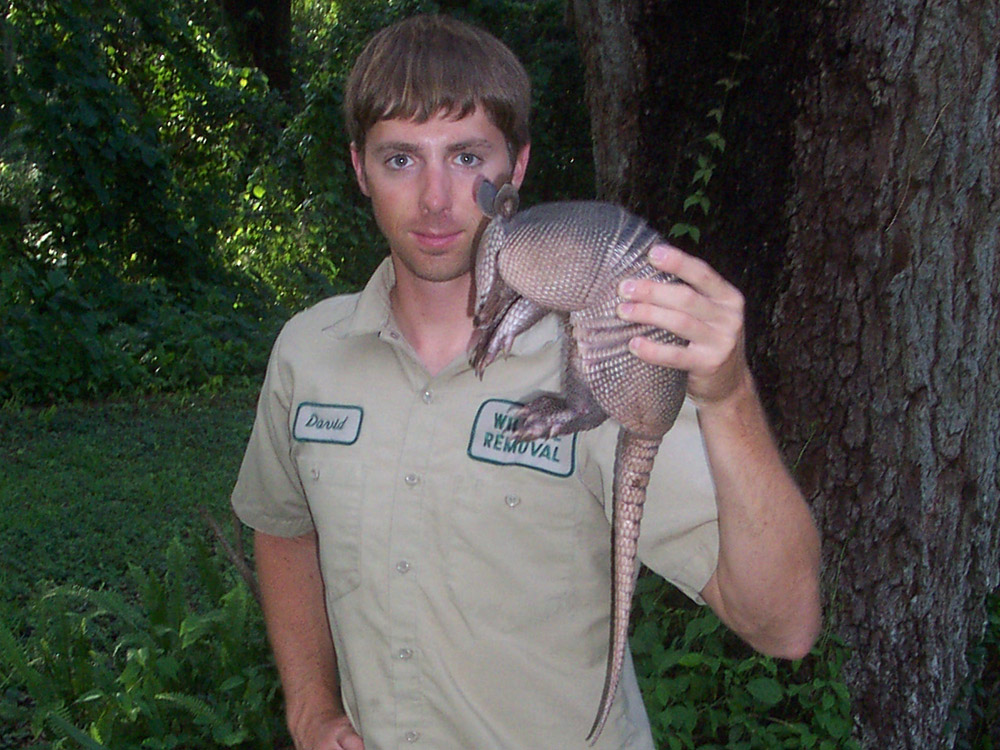|

 |
Another juvenile armadillo. |
 |
Customer Armadillo Email: Dear David, It seems like you and your team have a huge appreciation for wildlife, otherwise I don't think you would have turned your animal-interractions into a career. Anyway, I have an odd request for you. I've been living in Orlando for the past few months as an intern and I plan on going back home (to lovely Indiana) in January. If I've ever seen an armadillo up north, I certainly don't recall it. Here, on the other hand, I've seen quite a few walking around in ditches and on the sides of roads and to be completely honest, they are fascinating. If I were to ask you for advice on catching an armadillo (strictly to admire the thing and NOT to do it any harm), would you think that was completely outlandish? Please let me know your thoughts on the matter! And thanks :) -Enthusiast (Kelsey)
My Answer: No, I don't suppose that would be strange. Buy a large cage trap, find an armadillo burrow, and set the trap on top of the burrow, flush against the ground. Eventually an armadillo will wander in the trap. Good luck!
Hmm, if I were to do it the old-fashioned way persay (reminiscent of the late steve erwin), would that even be possible? (Note: i am a college-aged female so while i may be able to catch up to the thing, i completely lack any knowledge of what might happen to me if i do) Do you recommend wearing gloves? What are the odds that I will get bit and regret this?
My Answer: Armadillos can't bite. They're just fast and slippery.
If you need armadillo control services in your hometown, click my National Directory of
Armadillos Trappers that I've carefully made for every USA city.
The Nine-Banded Armadillo is definitely an unusual creature. They are not native to anywhere in the United States. They were introduced from Central and South America. This nocturnal creature actually sleeps about 20 hours per day, inside a large
burrow that it dug. It has several such burrows, and if you're concerned about dillos on your property, there's a good chance you've already noticed a big armadillo hole dug out near your house. This animal emerges at night and forages for insects,
primarily underground earthworms and grubs. They can dig up a lot of dirt in one night, and you may have noticed your nice yard or landscaping dug full of small holes. There are many interesting facts regarding this mammal,
such as the fact that mothers always give birth to quadruplets, so
if you want to learn more, please read my How To Get Rid of Armadillos page.
AAAnimal Control is a privately owned wildlife removal and pest control business, located in Orlando Florida. I deal strictly with wild animals such as dillos. I am not an extermination company, but a critter removal
and control specialist. The above photos are some of the many that I've taken in the field over my years of work. Please email me if
you have any questions about the above photographs, or any questions about
wildlife problems or armadillo control issues.
| |
|